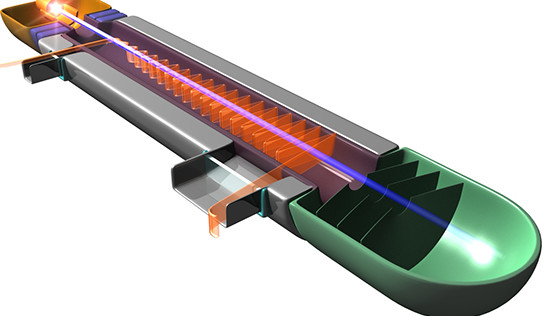DARPA’s dream: vacuum tubes from 3-D printers

DARPA, through its Innovative Vacuum Electronic Science and Technology (INVEST) program, aims to develop the science and technology base for new generations of more capable vacuum tube electronic devices (VEDs).
DARPA, through its Innovative Vacuum Electronic Science and Technology (INVEST) program, aims to develop the science and technology base for new generations of more capable vacuum tube electronic devices (VEDs).
Those microwaves that heat the food in your microwave oven come from a magnetron, the vacuum tube that made radar possible in the first half of the 20th century. Traveling wave tubes (TWTs), not solid-state amplifiers, generate the strong electromagnetic signals in communication satellites because of their exceptional on-orbit reliability and high power efficiency. Tubes are not dead!
Physical scaling laws have been the showstopper for millimeter-wave VEDs so far: as engineers push the operating frequency of electronic devices upward, the output power from the same devices goes down. With INVEST, DARPA aims over the next three years to create a community of researchers that will find ways through this technical bottleneck.
The INVEST program aims to strengthen the science and technology base for new generations of vacuum tubes operating at millimeter-wave frequencies above 75 GHz. Those awarded contracts under the program will take on fundamental research projects in areas that include physics-based modeling and simulation of VEDs, innovative component design, electron emission processes, and advanced manufacturing.
3-D printers should allow an entire tube structure to be aligned right off the assembly line, which a DARPA spokesman called “a beautiful vision” and “a choreographed effort across many disciplines to create one of these vacuum tubes.” We’ll tune our Gunn diodes to 75 GHz and listen for DARPA to come on the air.
Those microwaves that heat the food in your microwave oven come from a magnetron, the vacuum tube that made radar possible in the first half of the 20th century. Traveling wave tubes (TWTs), not solid-state amplifiers, generate the strong electromagnetic signals in communication satellites because of their exceptional on-orbit reliability and high power efficiency. Tubes are not dead!
Physical scaling laws have been the showstopper for millimeter-wave VEDs so far: as engineers push the operating frequency of electronic devices upward, the output power from the same devices goes down. With INVEST, DARPA aims over the next three years to create a community of researchers that will find ways through this technical bottleneck.
The INVEST program aims to strengthen the science and technology base for new generations of vacuum tubes operating at millimeter-wave frequencies above 75 GHz. Those awarded contracts under the program will take on fundamental research projects in areas that include physics-based modeling and simulation of VEDs, innovative component design, electron emission processes, and advanced manufacturing.
3-D printers should allow an entire tube structure to be aligned right off the assembly line, which a DARPA spokesman called “a beautiful vision” and “a choreographed effort across many disciplines to create one of these vacuum tubes.” We’ll tune our Gunn diodes to 75 GHz and listen for DARPA to come on the air.
